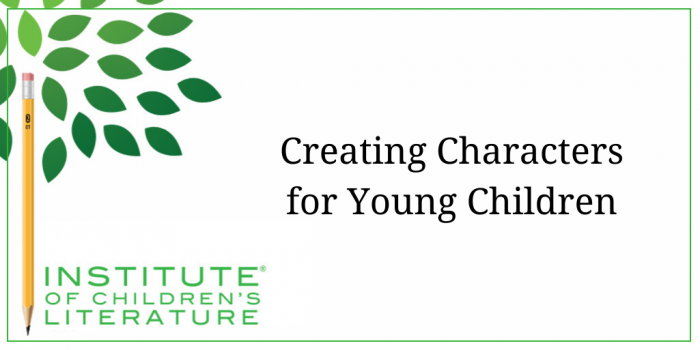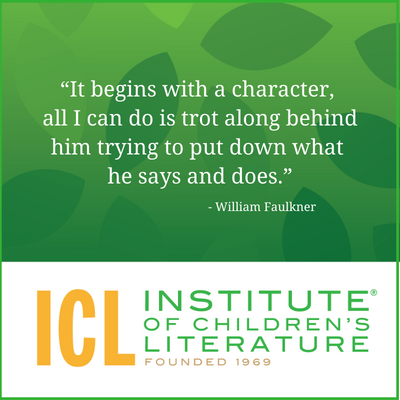1000 N. West Street #1200, Wilmington, DE 19801
© 2024 Direct Learning Systems, Inc. All rights reserved.

Stories for very young children tend to come in two flavors: the story with a plot and the story with a purpose. Now, a story with a plot can also have a purpose, but if you don’t have a plot, you better have a purpose.
The purpose of a very young child’s story may be to introduce a concept like counting or colors. The purpose may be to introduce the child to a moral or character-building activity like sharing or patience. The purpose may be to introduce the child to a potentially scary activity they will soon face like going to the doctor or starting school. All of these purpose things can also have a plot (and will probably sell far more easily if they do). And if the story has a plot, it probably has a single main character.
 Your Main Character
Your Main CharacterSo let’s think a bit about that main character. Your character needs to be someone the young child can (1) relate to and (2) care about. Your main character may not be the nicest person we know. Children are actually much more forgiving about the flaws of others than we expect. Most kids know that they are not always so nice themselves, especially inside. However your reader needs to relate to the character; the reader needs to find something in the character that feels real.
The main character may have flaws and those flaws may make things difficult as that character faces his/her story challenge. But the character should face a problem and not be the problem. Having a main character who exists solely so you can “fix” him/her though the story plot does not work for young people. It feels lecture-some (at worst) and fails to connect with the reader (at best).
Like adults, young people like main characters they can relate to and admire. And just like adults, most young people do not consider themselves selfish, mean spirited, or spoiled. Sure, some actually are, but they still think of themselves in positive ways and when we do bad things, we always feel that we had some kind of reason. It’s just human nature. So if we create main characters who are purely selfish, mean spirited or spoiled, we create characters that the reader cannot connect with. And that makes a story fail with the reader (even though stories like that do get published sometimes).
One thing children are not very forgiving of is a shallow, or poorly thought out character. This often happens when we look at a character only with adult eyes. Adult eyes see a whiny child in a store and immediately judge. Writer eyes look at the same fussing child and ponder what might be happening that would make that child feel his behavior is a completely reasonable reaction to the situation at hand.
Characters who vacillate between being too babyish and too adult are common in the manuscripts of new writers. So are generic characters with no real personality. Both happen when you casual dump in a character you created with adult eyes. You must truly know the character in order to flesh it out completely. Some writers know a bit about their characters. the bits they feel they need in the scenes and hope that is enough. Unfortunately, they often find themselves getting bogged down in the middle of the story because an unexpected story turn forces them to face that they don’t know how to make the characters respond.
For very young children, characters are often bigger and more obvious than in real life, but this isn’t the same as being flat or cookie-cutter characters. Often characters in stories for very young children illustrate a single characteristic blown up to huge status. Think of it like a caricature. In order to make an effective caricature, you have to really study the “real” child so that when you blow up these characteristics, they still feel right, they still fit.

When creating characters, you must remember that kids do not think like adults, do not talk like adults and do not react like adults. Still, because your characters are expected to do a job in your book, they must have sufficient kid like motivation to do the things they do in the story. Your protagonist must have a goal, and his reason for wanting that goal must be one that kids can relate to. The goal must be one that the reader will consider worthy. It is not a worthy goal for a small child to simply want to make his mother miserable because he happens to be a brat. But it is a perfectly worthy goal for the same child to be desperate to remove himself from a situation that is painful to him, even if it’s somewhere his mother is certain they should be.
So as you take pen in hand for your next young reader story, remember to motivate your child using writer eyes (not adult eyes) and look for ways to make him “larger than life” so he or she will grab young readers and delight them all the way to the end of the tale.
With over 100 books in publication, Jan Fields writes both chapter books for children and mystery novels for adults. She’s also known for a variety of experiences teaching writing, from one session SCBWI events to lengthier Highlights Foundation workshops to these blog posts for the Institute of Children’s Literature. As a former ICL instructor, Jan enjoys equipping writers for success in whatever way she can.
1000 N. West Street #1200, Wilmington, DE 19801
© 2024 Direct Learning Systems, Inc. All rights reserved.
1000 N. West Street #1200, Wilmington, DE 19801
© 2024 Direct Learning Systems, Inc. All rights reserved.
1000 N. West Street #1200, Wilmington, DE 19801
© 2024 Direct Learning Systems, Inc. All rights reserved.
1000 N. West Street #1200, Wilmington, DE 19801
© 2025 Direct Learning Systems, Inc. All rights reserved.
1000 N. West Street #1200, Wilmington, DE 19801
©2025 Direct Learning Systems, Inc. All rights reserved. Privacy Policy.
8 Comments